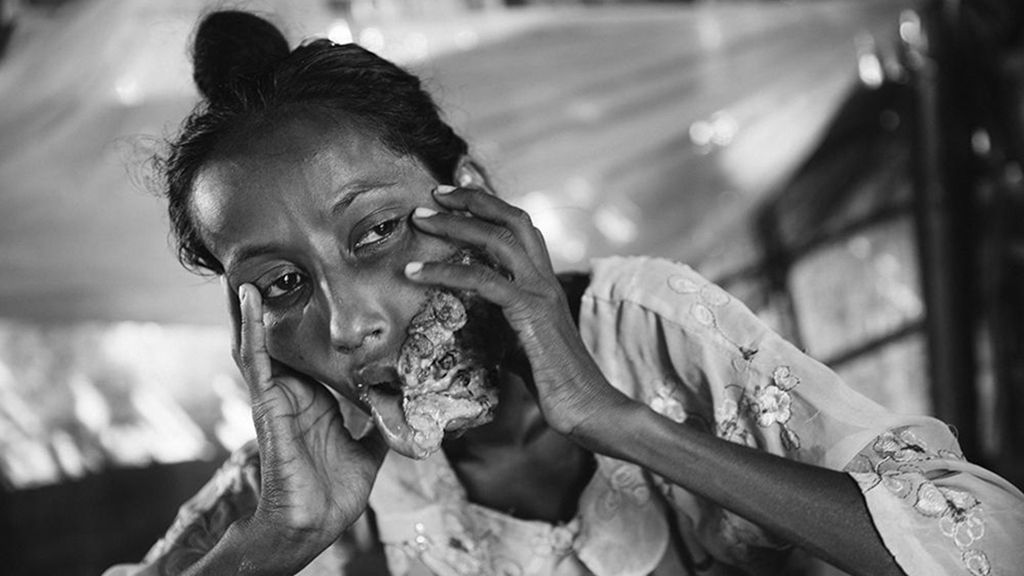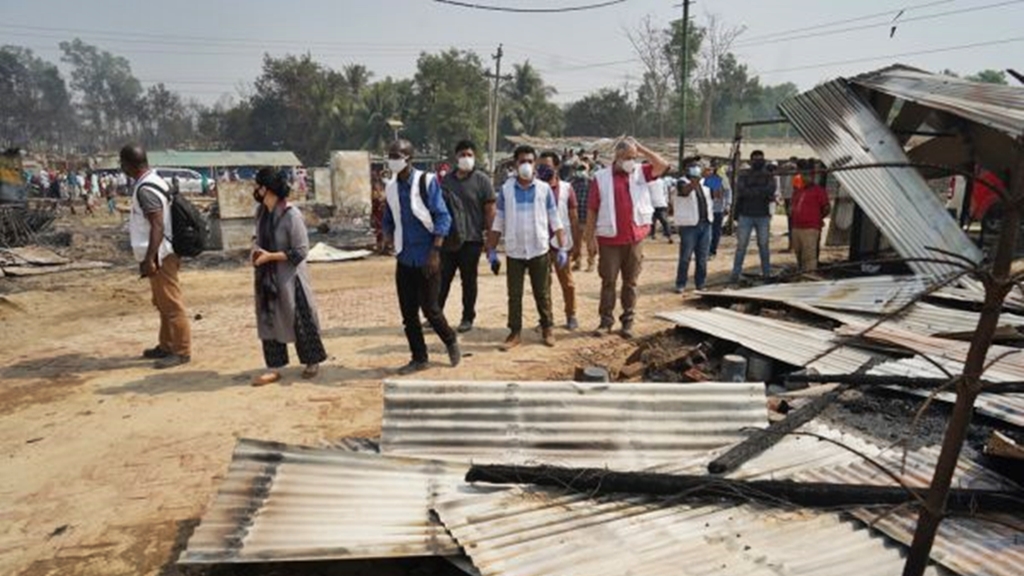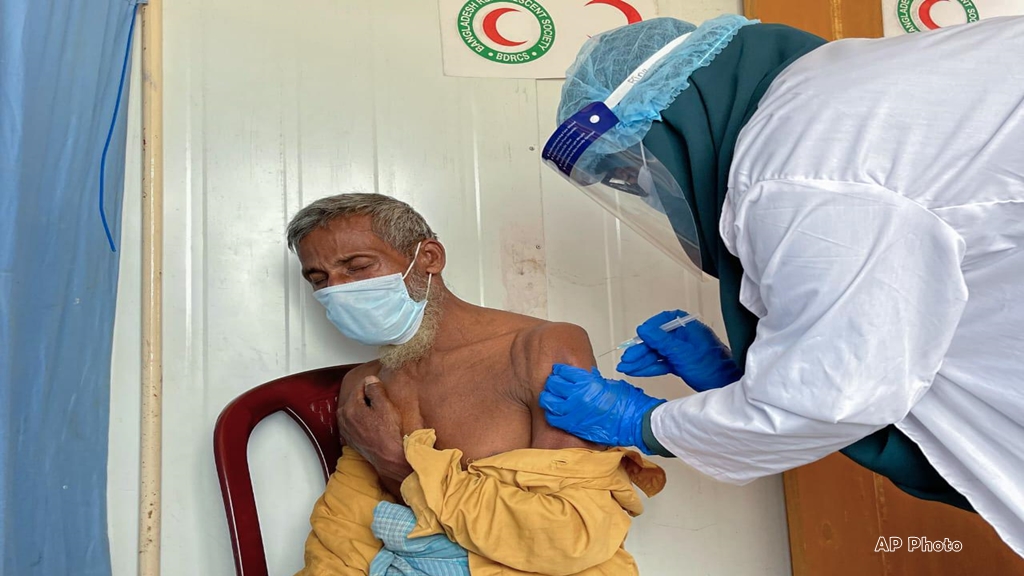
Heartbreaking Photos from the Front Line of Burma’s Rohingya Genocide
- 08/07/2016
- 0
When I meet Anjuma, she is sitting on a cot in the corner of her bamboo hut with a cloth held up to her face. She whimpers as her eyes look to the group of children peering in. A curtain is drawn and the children strain to overhear, but it becomes quickly apparent they needn’t bother. Anjuma can no longer speak, a result of the cancer that has engulfed her face over the years spent in the Dar Paing unregistered camp. She is 22 years old.
Anjuma is a member of Burma’s Rohingya ethnic group. The community practice a Sufi-inflected variation of Sunni Islam, which sees them systematically persecuted by the Buddhist majority. When she was 18, violence broke out in the state of Rakhine, and Buddhist locals burned down Rohingya villages. The violence left 192 dead, and 140,000 Rohingya children, women, and men were forced into the camp complex where they’ve been detained for the last four years.
I excuse myself to ask Anjuma’s sister waiting outside why no one has transferred Anjuma to the Sittwe General Hospital. She responds that “the Rakhine doctors will end her life prematurely.”
When I return to Anjuma’s bed to confirm this, she sits with her wrists crossed—they’re half the size of my own, reminding me this particular camp does not have registration with the World Food Programme (WFP).
“Do you think the Rakhine doctors will kill you?”
She nods and adds nothing more. Anjuma is completely sure she will die sooner at a hospital than in her own dirt-floored hut where she survives off two meals a day.
 The Dar Paing refugee camp sits halfway up the west coast of Burma.The sentiment is widespread among the 140,000 other Rohingya living in the camp. Following the suspension of Médecins Sans Frontières from the camp in 2014, the notion that Rakhine officials and healthcare professionals are complicit in genocide has taken root in the community. Former lawyer and prominent Rohingya community leader within the camp, U Kyaw Hla Aung, believes it too.
The Dar Paing refugee camp sits halfway up the west coast of Burma.The sentiment is widespread among the 140,000 other Rohingya living in the camp. Following the suspension of Médecins Sans Frontières from the camp in 2014, the notion that Rakhine officials and healthcare professionals are complicit in genocide has taken root in the community. Former lawyer and prominent Rohingya community leader within the camp, U Kyaw Hla Aung, believes it too.
“It is true, at night, they are giving wrong treatment to kill the patient,” he said. “Within these four years, nearly one hundred patients were killed there. Not a single person can come back to their home. Only dead bodies are taken from hospital.”
There are mobile clinics run by the health department, open three days a week. But for many, the clinic’s 20 minute consultation time is not enough for treatment, while referral to Sittwe General Hospital is often rejected, because of the community’s fears of being euthanized.
Meanwhile the number of sick people continues to grow, as storm damaged shelters perennially await repair. The camp I leave is one left in limbo—between mistrust and a quiet desperation for dignity.
 A Rohingya woman holding her ill son in a truck that will take her back across the camp complex to her own bamboo hut, a journey of one hour
A Rohingya woman holding her ill son in a truck that will take her back across the camp complex to her own bamboo hut, a journey of one hour
Four months after the National League for Democracy led by Nobel Laureate Aung San Suu Kyiswept national elections, calls to end the mistreatment of the Rohingya have been met with silence. The International State Crime Initiative released a report in November 2015 stating that the Rohingya now face the final stages of state-sponsored genocide.
In Australia, it should be noted that many of the country’s refugees in offshore detention were originally persecuted Rohingya fleeing Burma. As the Association of Southeast Asian Nations (ASEAN) Parliamentarians for Human Rights wrote in 2015, “The longstanding persecution of Rohingya has led to the highest outflow of asylum seekers by sea [in the region] since the US war in Vietnam.”
While the government in Burma seems set on its policy of quiet extermination, Australia remains similarly married to its policy of indifference, and people like Anjuma will continue to die.
Tragically, Anjuma died at the camp on March 28, 2016, two months after her photograph was taken.
For more on the Rohingya, watch our documentary Left for Dead: Myanmar’s Muslim Minority.
Follow Mridula Amin on Instagram.
 Rohingya cannot be educated, politically organize, or have citizenship within Burma. With a healthcare system that fails them, it has created a deeply disenfranchised people who are rapidly losing hope for themselves.
Rohingya cannot be educated, politically organize, or have citizenship within Burma. With a healthcare system that fails them, it has created a deeply disenfranchised people who are rapidly losing hope for themselves.
 Hasina Begum, 23, is pregnant for the second time. Her first child died after four days due to contracting Hepatitis.
Hasina Begum, 23, is pregnant for the second time. Her first child died after four days due to contracting Hepatitis.
 Hasina wears a Thabiss, a Muslim charm for good luck.
Hasina wears a Thabiss, a Muslim charm for good luck.
 It has now been 8 months without food aid at Dar Paing. Unregistered on the World Food Programme, they rely on donors and farming, however this still only reaches a maximum of two meals a day.
It has now been 8 months without food aid at Dar Paing. Unregistered on the World Food Programme, they rely on donors and farming, however this still only reaches a maximum of two meals a day.
 Rehena and her four children live in this hut where she gave birth 14 days ago. In a storm a few months ago, she lost most of her belongings. She raises her children alone as her husband left her for another woman.
Rehena and her four children live in this hut where she gave birth 14 days ago. In a storm a few months ago, she lost most of her belongings. She raises her children alone as her husband left her for another woman.
 Sura Khati, 65, has attended the Sittwe General Hospital three times in the last six months for her neck infection. Despite being x-rayed and diagnosed, all three times she has been discharged without medication.
Sura Khati, 65, has attended the Sittwe General Hospital three times in the last six months for her neck infection. Despite being x-rayed and diagnosed, all three times she has been discharged without medication.
 One hundred forty thousand Rohingya children, women, and men were forced into the current camp complex in 2012 where they have been detained for the last four years.
One hundred forty thousand Rohingya children, women, and men were forced into the current camp complex in 2012 where they have been detained for the last four years.
 Saed Ahmed, 70, with his grandchild Arfat Husain, 4. Saed’s home was destroyed in a storm. “It’s cold,” he says. “All our clothes went with the storm.”
Saed Ahmed, 70, with his grandchild Arfat Husain, 4. Saed’s home was destroyed in a storm. “It’s cold,” he says. “All our clothes went with the storm.”







